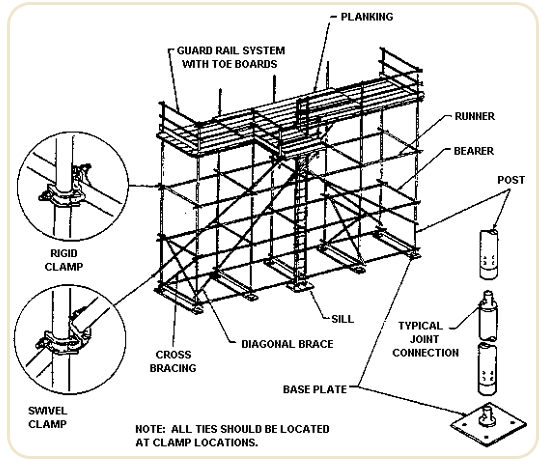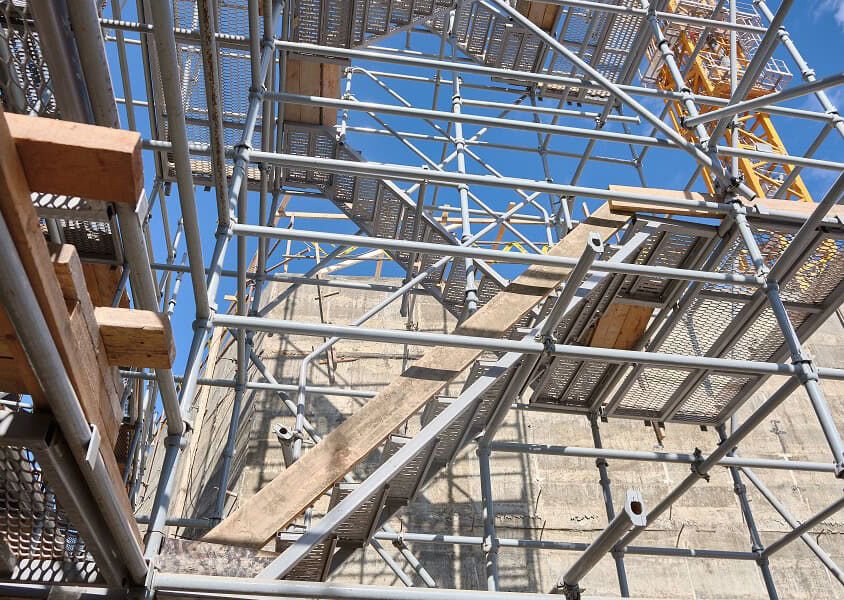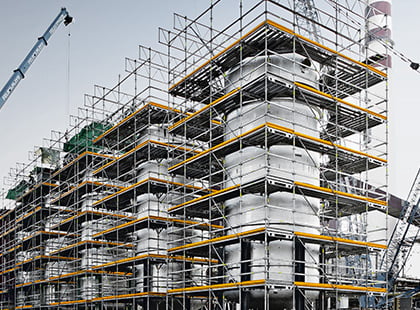Safe and Durable Scaffolding Guildford for Your Upcoming Construction Work
Safe and Durable Scaffolding Guildford for Your Upcoming Construction Work
Blog Article
A Comprehensive Guide to the Vital Functions of Scaffolding in Modern Construction
The landscape of contemporary building increasingly relies upon effective scaffolding systems that focus on efficiency, security, and innovation. As jobs expand in complexity, comprehending the essential functions of scaffolding becomes critical for making sure worker security and enhancing project timelines. This guide discovers numerous sorts of scaffolding, highlights crucial safety features, and examines material developments that add to performance and sustainability. However, the ramifications of these components prolong much past plain building and construction methods, prompting a closer take a look at just how they influence overall task success and employee wellness.
Sorts Of Scaffolding
Although scaffolding systems can vary commonly in style and application, they typically drop into a number of unique classifications that provide to various construction demands - Scaffolding. One of the most usual types include sustained scaffolding, put on hold scaffolding, and rolling scaffolding
Supported scaffolding is composed of platforms supported by a framework of posts, which offer a secure and elevated functioning surface. This kind is usually made use of for tasks that require considerable elevation, such as bricklaying or external painting.
Put on hold scaffolding, alternatively, is utilized for jobs requiring access to high altitudes, such as cleaning or repairing building facades. This system hangs from a rooftop or another framework, enabling employees to lower or increase the system as required.
Rolling scaffolding attributes wheels that permit simple wheelchair throughout a job site. It is particularly beneficial for jobs that require frequent moving, such as interior job in big areas.
Each type of scaffolding is designed with specific applications in mind, making certain that building projects can be executed successfully and effectively. Understanding these categories is essential for selecting the suitable scaffolding system to meet both task requirements and website problems.
Trick Safety And Security Functions
Safety and security is critical in scaffolding systems, as the possible risks related to functioning at heights can cause serious mishaps otherwise appropriately managed. Trick safety and security functions are necessary to ensure the well-being of workers and the honesty of the building and construction site.
Firstly, guardrails are important. These obstacles give a physical safeguard against drops, substantially decreasing the danger of serious injuries. Additionally, toe boards are usually made use of to protect against devices and products from falling off the scaffold, shielding workers below.
One more vital component is using non-slip surface areas on platforms. This attribute improves grip, especially in adverse weather conditions, thus lessening the chance of slides and drops. In addition, gain access to ladders must be firmly positioned to help with secure access and departure from the scaffold.
Routine assessments and upkeep of scaffolding systems are also critical. These evaluations make sure that all elements remain in great condition and operating appropriately, resolving any type of wear or damage quickly.
Finally, appropriate training for all workers associated with scaffolding operations is important to make certain that they comprehend security protocols and can recognize possible threats. Scaffolding. Jointly, these attributes develop a safer working setting and substantially mitigate dangers related to scaffolding
Product Technologies
Developments in product scientific research have actually significantly influenced the scaffolding industry, enhancing both safety and performance in contemporary scaffolding unterricht building and construction. The intro of high-strength steel and aluminum alloys has actually transformed conventional scaffolding systems.
In addition, innovative composite materials, such as fiberglass-reinforced plastics, have actually become sensible choices. These materials are resistant to corrosion and ecological deterioration, thus extending the lifespan of scaffolding systems, particularly in extreme weather. Using such materials adds to reduce maintenance costs and guarantees consistent performance with time.


Layout Considerations
Thinking about the intricacies of modern-day building and construction projects, effective scaffolding layout is paramount to making sure both performance and safety. Style considerations should incorporate numerous factors, including tons ability, height, and the specific requirements of the building and construction site. Each job provides distinct challenges, demanding a flexible approach to scaffolding systems that can adapt to varying problems.
Structural stability is important; therefore, designers should compute my explanation the loads that the scaffolding will certainly sustain, consisting of workers, materials, and devices. The choice of materials plays a crucial role in guaranteeing the scaffolding can hold up against these lots while remaining light-weight and sturdy. In addition, the style should enable easy accessibility and egress, facilitating the smooth movement of personnel and products.
Security functions, such as guardrails and non-slip surface areas, need to be integrated to reduce risks of accidents. Additionally, the format has to think about the surrounding setting, including nearby structures and prospective threats. By attending to these layout factors to consider, building firms can boost the performance of scaffolding systems and advertise a more secure working environment, eventually contributing to the total success of the job.
Maintenance and Inspections
The effectiveness of scaffolding systems expands beyond first layout and execution; recurring upkeep and routine evaluations are essential to ensuring their continued performance and safety and security throughout the period of a project. Regular examinations should be carried out by qualified personnel to recognize any kind of indicators of wear, damages, or instability that can endanger the stability of the scaffolding.
Upkeep methods should include routine checks dig this of architectural parts, such as frameworks, fittings, and planks, making certain that all elements remain secure and free from corrosion or other degeneration. Furthermore, the performance of safety features, such as guardrails and toe boards, should be assessed to make sure conformity with safety and security guidelines.
Documents of all inspections and maintenance activities is essential for accountability and governing conformity. An organized method to record-keeping not just aids in tracking the condition of the scaffolding yet likewise offers required proof in the occasion of an occurrence.
Ultimately, developing a comprehensive maintenance and examination timetable will considerably decrease the threat of crashes and boost the overall safety and security of the building and construction website. By focusing on these methods, building managers can secure employees and maintain the task's honesty.

Conclusion
In conclusion, the crucial features of scaffolding in modern construction include a variety of essential aspects, consisting of diverse kinds, key safety devices, product innovations, and thoughtful layout factors to consider. Highlighting security with guardrails and non-slip surface areas, alongside improvements in materials like high-strength steel, boosts both performance and sustainability. Furthermore, routine maintenance and inspections are crucial for ensuring architectural integrity and safety on building sites, ultimately facilitating efficient project implementation and promoting the wellness of workers.
The landscape of modern-day building progressively counts on reliable scaffolding systems that focus on advancement, performance, and safety.Developments in product science have substantially affected the scaffolding industry, enhancing both security and effectiveness in modern building. On the whole, these material technologies not just boost the efficiency and safety of scaffolding systems however additionally straighten with the industry's press in the direction of sustainability, as many modern materials are made to be more eco friendly.
Considering the complexities of modern building and construction jobs, efficient scaffolding style is vital to ensuring both capability and security.In verdict, the important functions of scaffolding in contemporary building and construction encompass an array of critical elements, including diverse types, vital safety and security devices, material advancements, and thoughtful design considerations.
Report this page